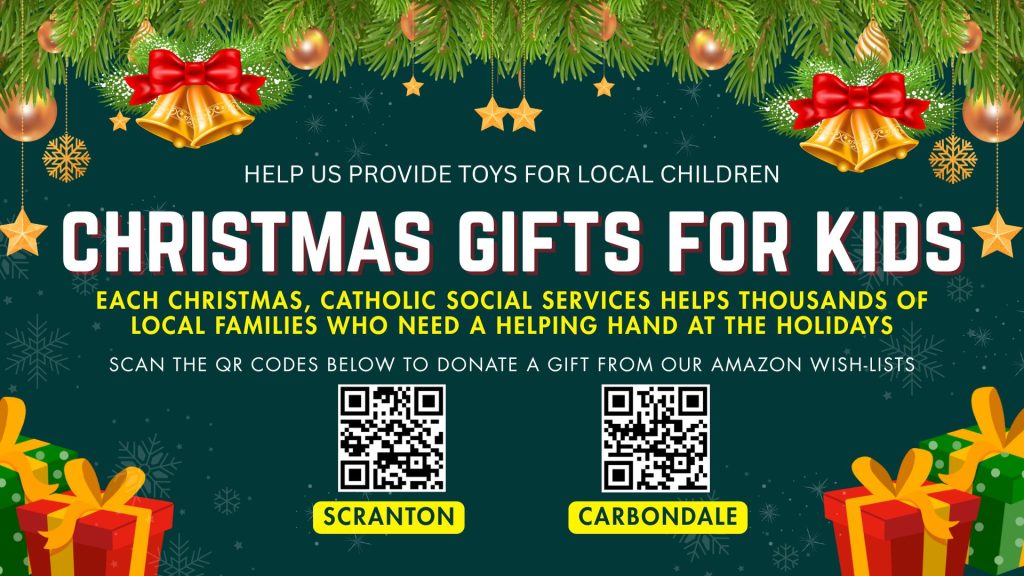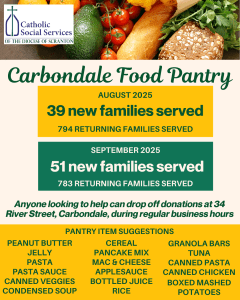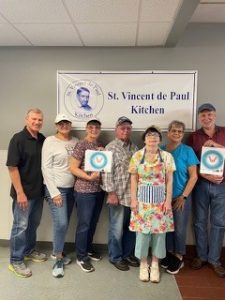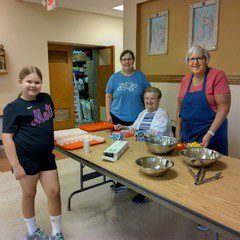SCRANTON – The City of Scranton and Catholic Social Services of the Diocese of Scranton formally announced on Nov. 13 that CSS will staff and operate the city’s Code Blue shelter at the Weston Field House for the 2025-2026 winter season.
The shelter, located at 982 Providence Road, opens on nights when the temperatures are expected to fall below 20 degrees or when winter conditions create dangerous windchills. Last winter, Scranton issued approximately 70 Code Blue alerts, with an average of about 15 individuals seeking shelter at Weston Field each night.
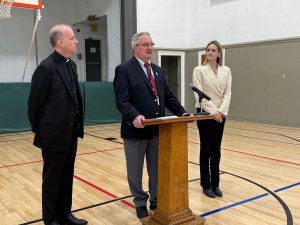
“We are proud to continue providing a Code Blue shelter here at Weston Field,” Scranton Mayor Paige G. Cognetti said. “The City and each of the partner organizations in our Unsheltered Task Force, which includes Catholic Social Services, remain committed to addressing the changing needs of those without stable housing in Scranton.”
Catholic School Services has served individuals experiencing homelessness in Scranton for more than three decades through Saint Anthony’s Haven, the city’s only year-round emergency shelter for adults.
In 2024, Saint Anthony’s Haven provided 5,567 nights of shelter to 549 individuals.
While the facility offers 20 beds for men and six for women, CSS officials noted that the additional space at Weston Field is essential on extremely cold nights.
“A shelter is one of our core programs. It is Gospel-based – this is what we do,” Joe Mahoney, Chief Executive Officer of Catholic Social Services, explained. “We provide emergency shelter 365 nights a year at Saint Anthony’s Haven, but on especially cold nights, we would need more room. Being able to house up to 50 (people) here will give us that space we need.”
Mahoney emphasized the collaboration required to launch the new partnership.
“Nothing happens in a vacuum,” he said. “We were able to come together and get this done.”
Representing the Diocese of Scranton, Father Gerald W. Shantillo, Vicar General, thanked the City and partner agencies for their cooperation.
“We are just so grateful that we could all work together to address this issue,” Father Shantillo said. “We are going to do our best to let people who are vulnerable and in need know that we love them as a community, and we’re going to help them get through the difficult times that they have.”
Jessica Spangenberg, Program Supervisor for Saint Anthony’s Haven, who will help organize the Code Blue shelter for Catholic Social Services, said the Weston Field location is well-suited for individuals who typically travel on foot.
“Most of our population is on foot. It’s not far from Saint Anthony’s Haven. It is also in a similar vicinity to the Community Intervention Center,” she noted.
Code Blue guests will have access to restroom facilities, hot beverages, as well as meals prepared by Saint Francis of Assisi Kitchen.
Spangenberg said volunteers will play a vital role in evening setup, morning cleanup, meal distribution, and laundry support. CSS personnel will oversee overnight staffing.
“We can use all the help we can get,” Spangenberg said. “Nothing is too small. An hour or two of volunteer time makes a difference.”
She also addressed common misconceptions about those experiencing homelessness.
“Anybody can be in this position. Most working-class people are one emergency, one crisis, one paycheck away,” she said. “Shelter, warmth, and food are not luxuries. They are basic human rights, and it takes a community effort to provide them.”
To volunteer to help with the Code Blue shelter, contact Spangenberg at JSpangenberg@cssdioceseofscranton.org or call (570) 342-1296, ext. 2715.

